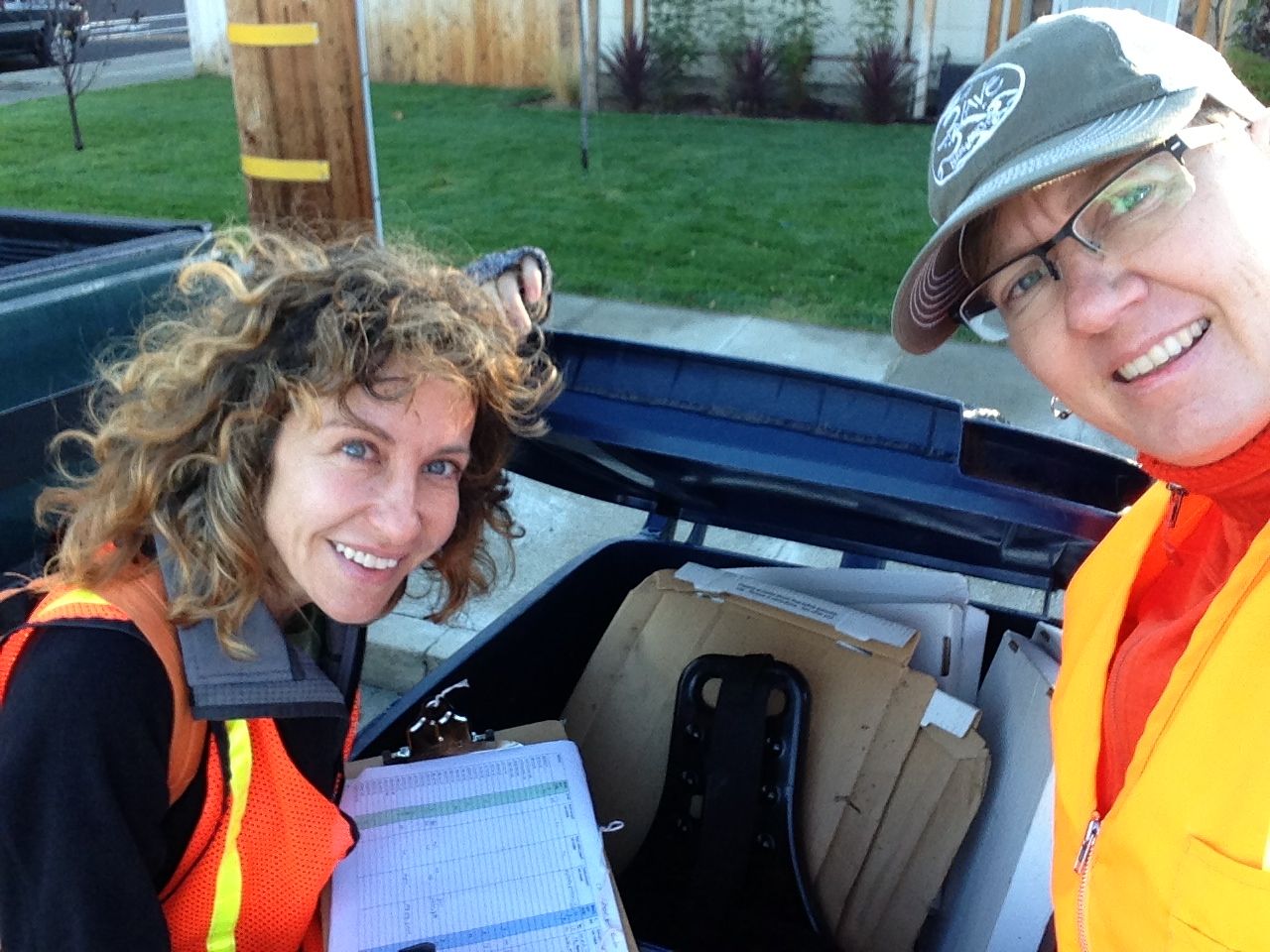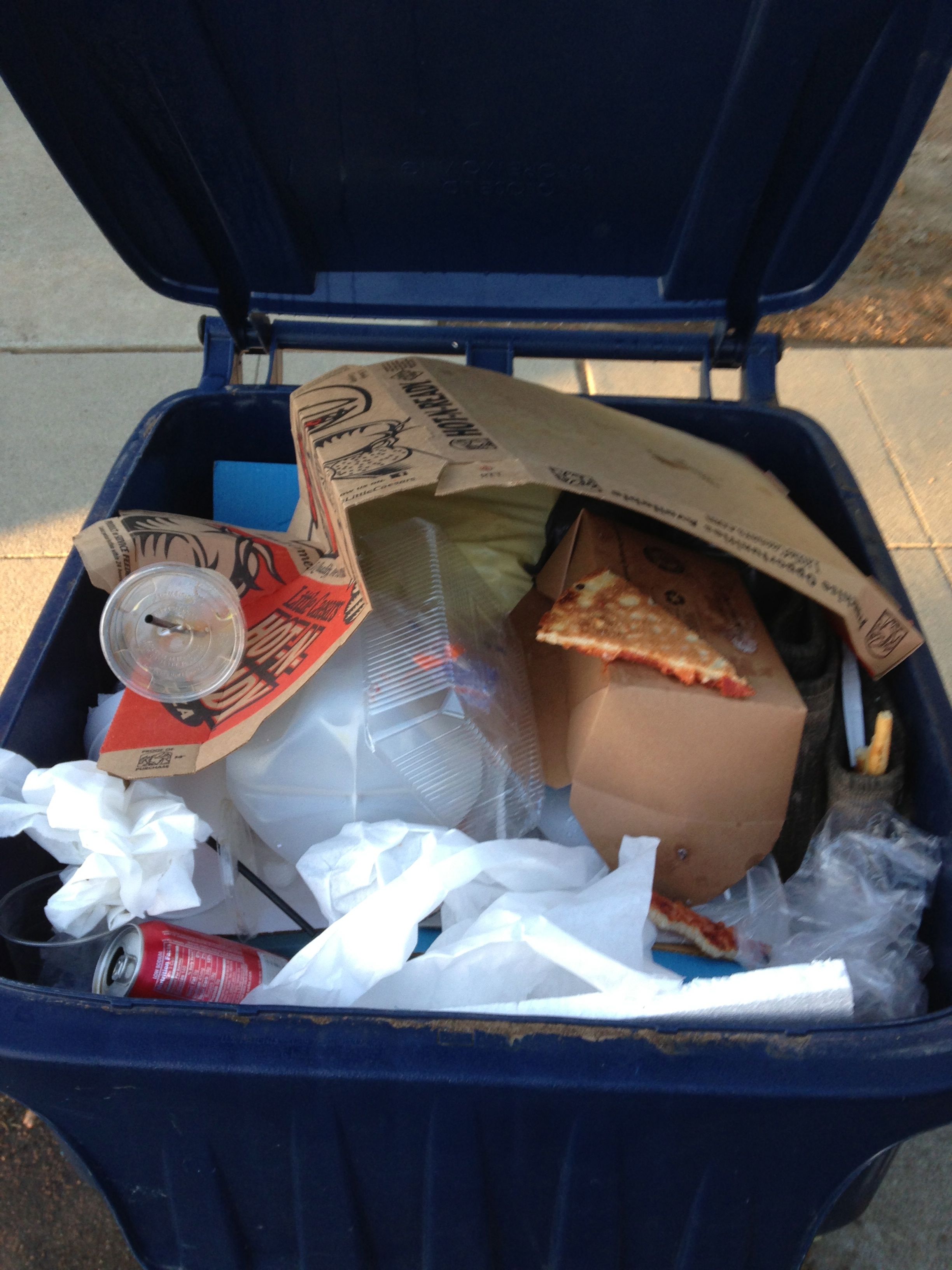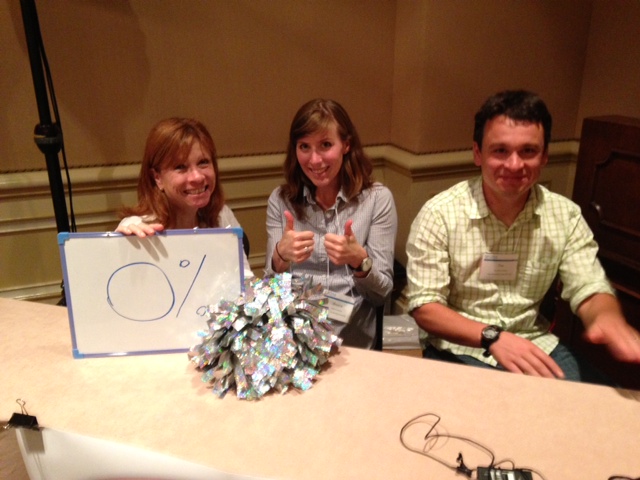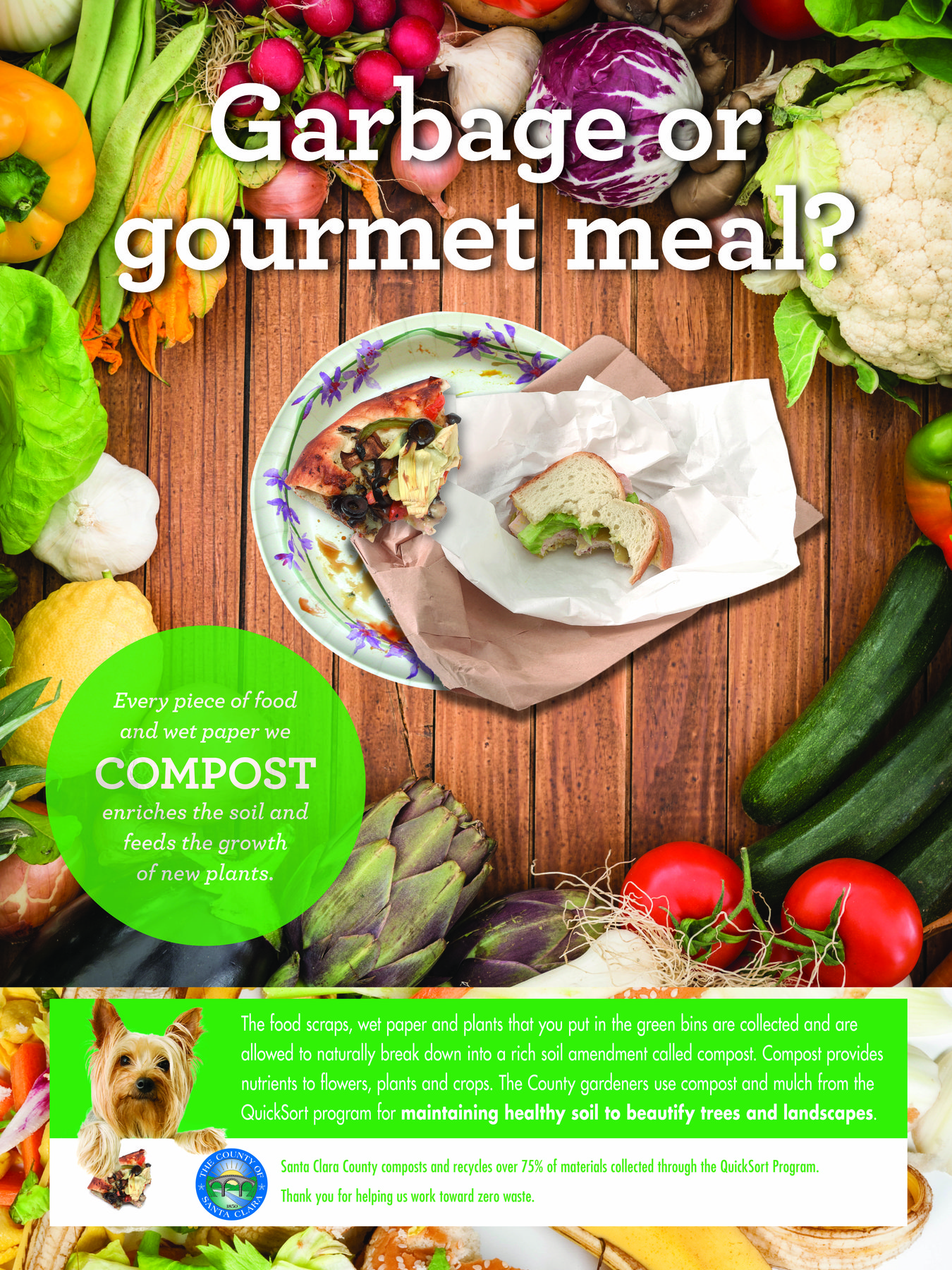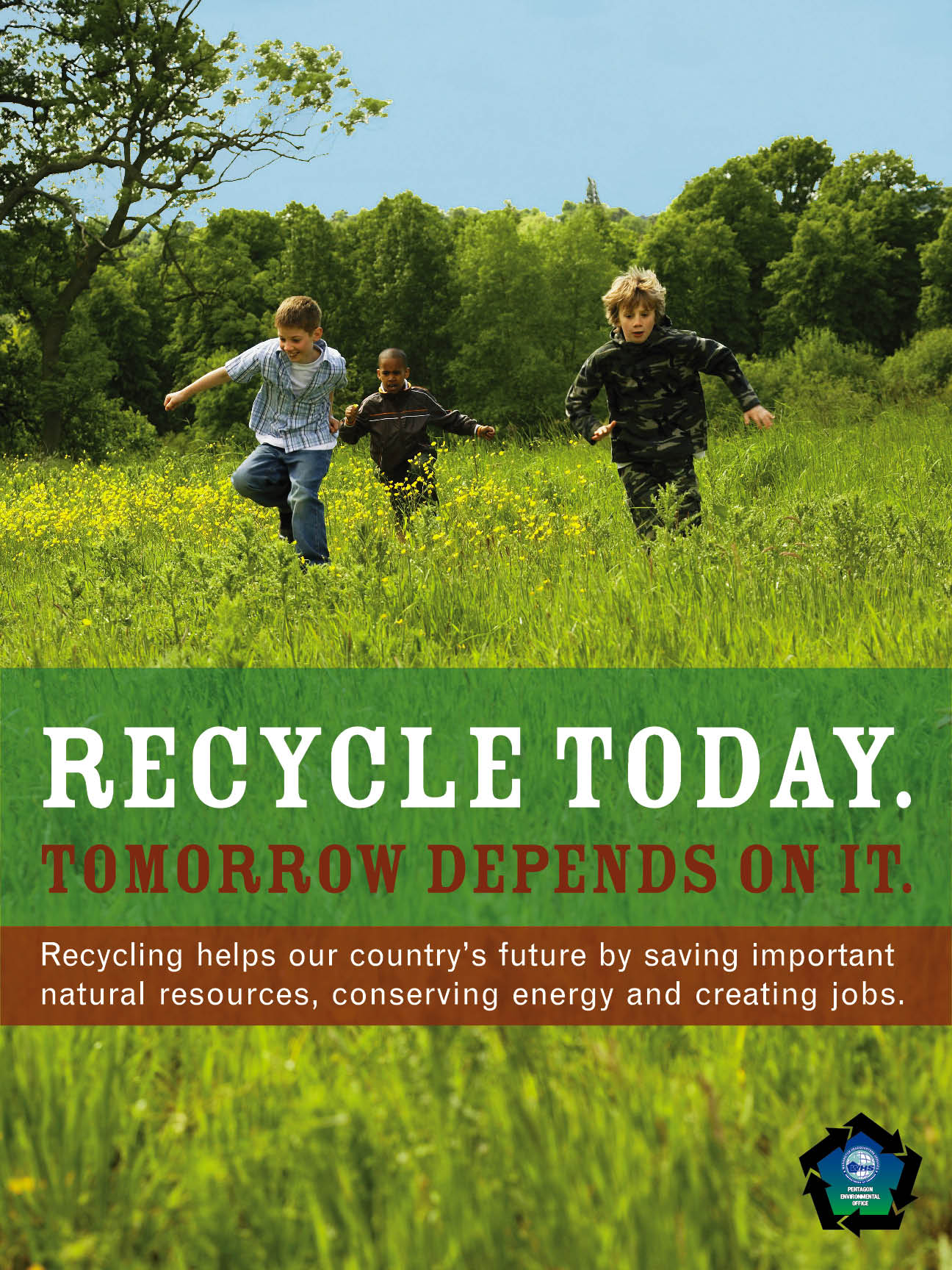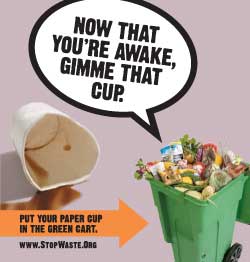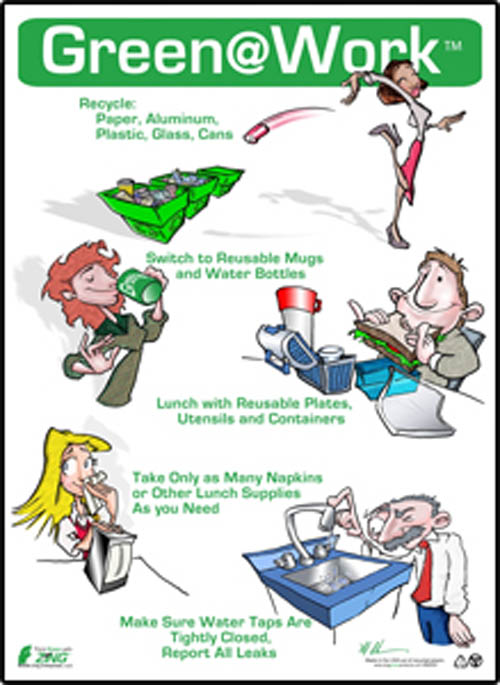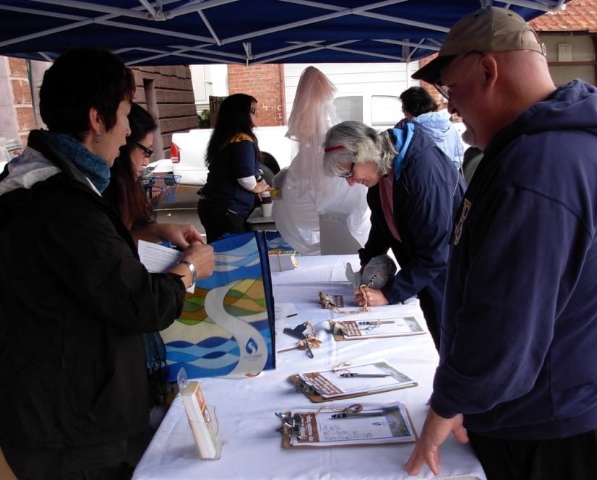[socialpoll id=”2179787″]
Recycling Spot Checks: Flipping Lids in Livermore
During the last week of September, my colleague Stefanie Pruegel (pictured left) and I (pictured right) donned orange safety vests and set out before sunrise to study recycling program participation in various neighborhoods in Livermore, California. Armed with headlamps, clipboards and maps, we walked some 20 miles over five days and flipped about 2,000 recycling and organics cart lids.
This walkabout was part of our observational research to gain insights into residents’ recycling and composting habits, including contamination patterns (i.e., putting things in the wrong carts). The data we gathered will also measure the baseline participation rate. Repeating this measurement after an outreach campaign will allow us to compare the results and determine how successful we were as well as guide the next phase of outreach. This particular kind of measurement can be a messy job, but someone’s gotta do it.
During our lid-flipping adventures, several patterns emerged:
• Livermore loves pizza and is confused about leftovers. In Livermore, the proper process is to chuck pizza boxes and leftovers into the Organics (compost) cart. Pizza boxes are considered food-soiled paper (as are most fast food paper wrappers), and pizza crusts are considered food scraps – all of which goes into Organics. However, we found households were evenly split over whether to put the box in Recycling or Organics.
• Livermore is a thirsty bunch, and cup sorting is a challenge. What is the preferred destination for takeout cups, lids and straws? These items are made of both plastic and paper, and each needs to be handled 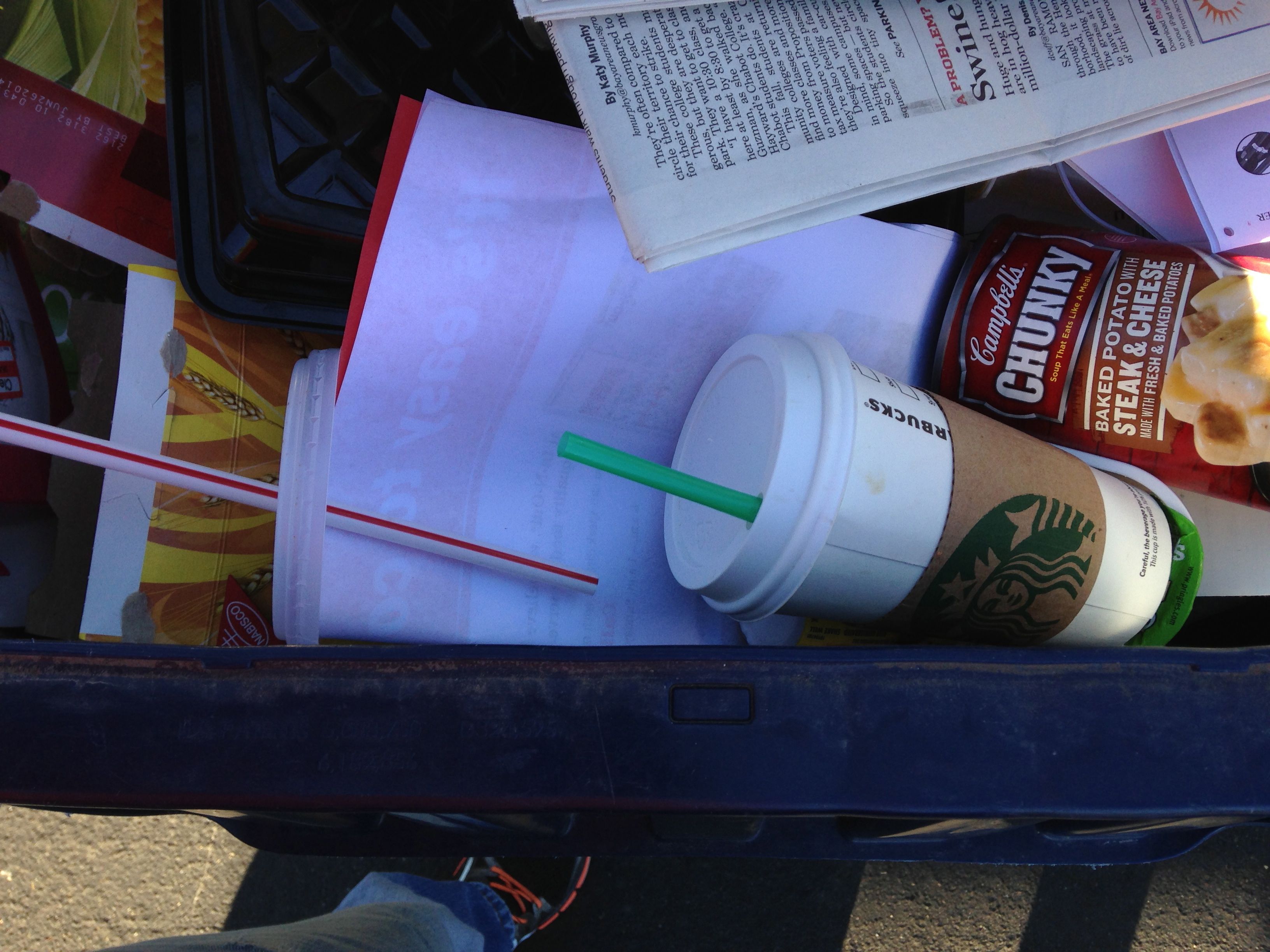 differently. This leads to a lot of consumer confusion. We found that no matter if the cups were for cold drinks (plastic) or hot drinks, (paper) the majority ended up in the recycling cart, along with their lids and straws. But, the lids and straws actually go into the garbage, and the paper cups go in the organics. This kind of contamination adds considerable expense for waste haulers and ultimately can drive up trash rates. (Please Note: This is a general observation and not a prediction for Livermore.)
differently. This leads to a lot of consumer confusion. We found that no matter if the cups were for cold drinks (plastic) or hot drinks, (paper) the majority ended up in the recycling cart, along with their lids and straws. But, the lids and straws actually go into the garbage, and the paper cups go in the organics. This kind of contamination adds considerable expense for waste haulers and ultimately can drive up trash rates. (Please Note: This is a general observation and not a prediction for Livermore.)
• Livermore has beautiful yards, and sorting the waste is a conundrum. Throughout the week we “ooh-ed” and “ah-ed” at the beautiful yards and landscaping in the neighborhoods we saw. However, many residents seemed to assume that anything from the yard belongs in the Organics cart. In fact, certain items like pet waste belongs in Garbage, not Organics. Putting whatever blows (or gets pooped) in people’s yards into the Organics cart causes another costly contamination headache.
We saw some clear consistencies in what was going right and wrong in the carts. Next we will tabulate our findings, design an outreach campaign to focus on the most prevalent behaviors that need to change, and afterwards, check those carts again. We look forward to helping the city and the citizens of Livermore “sort out” any issues and move forward with their waste reduction goals.
What’s in a Word? Waste Term Survey Shows Consumer Confusion
OK, we admit it: we’re waste word wonks. But when it comes to encouraging correct recycling behavior, words are the key to deeds.
In our work with client agencies, we’ve noticed that some recycling coordinators and others are discouraged: they’ve been doing outreach for years, and yet they feel it hasn’t worked. Some in the industry are turning to new technologies that divert waste without having to address those elusive behavioral issues. We also observe that the average citizen is presented with different terms and other mixed messages about waste. As a first step to addressing this issue, we conducted a survey to test current understanding of waste terms and processes among Californian adults.
We surveyed Californians up and down the state, testing their understanding of terms like “diversion” and “biodegradable.” We also asked people where they would put various discarded items (e.g., an orange rind or used napkin) when presented with bins having different labeling systems.
While most respondents were clear that soda cans go into the Recycling bin, there was significant confusion on where to put items like potato chip bags, used napkins, and especially plastic forks. No wonder there is a lot of contamination in the waste stream when 70% of respondents think plastic forks should go into the Recycling bin. (They are not recyclable in most jurisdictions.) Some 40% of respondents would put a used napkin in a bin marked Garbage, while only 33% would put it in a bin marked Landfill; over one-third would put a used napkin in Recycling.
The most revealing result of the survey came from a question about how consumers understand what happens in a landfill. Here is the breakdown of responses:
What happens at a Landfill? (choose one)
| Answer Options | Response Percent |
| Waste is sorted into recyclables and garbage. Recyclables go somewhere else. Garbage is buried there and breaks down. | 26.9% |
| Waste is sorted into recyclables and garbage. Recyclables go somewhere else. Garbage is buried there, where it stays forever. | 34.5% |
| Anything that is thrown away, including garbage and recyclables, gets dumped and most of it breaks down. | 33.0% |
| Dirt is dumped to make usable land for building homes, offices, etc. | 5.6% |
Some 60% of respondents think that most of what goes to Landfill (whether it be Garbage or even Garbage and Recyclables) eventually breaks down. If a person believes that Landfilled objects break down over time anyway, s/he probably has much less incentive to keep things out of Landfill. I mean, it all goes “away,” right? Wrong. Clearly, there is outreach work to be done.
Results of the survey were presented at this month’s California Resource Recovery Association conference. And we do mean presented: we used a game show format, with Gigantic staff taking the roles of MC and answer 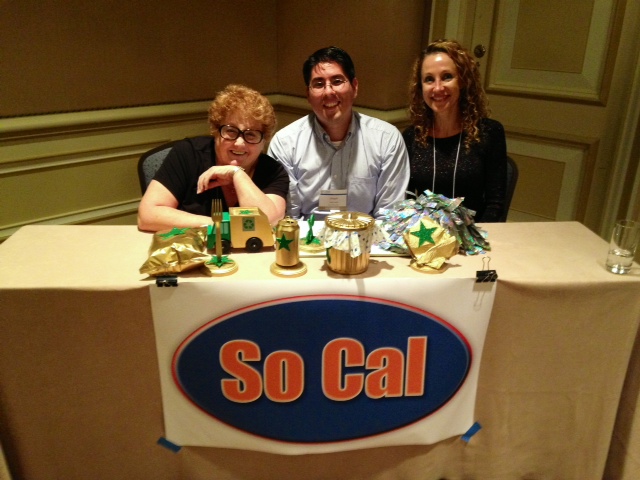 wonks, with Gigantic principal Shana McCracken giving a fine imitation of Vanna White. Environmental professionals from northern California were pitted against three pros from the southern end of the state, in a test to see if industry insiders could guess how the majority of “regular citizens” responded to particular survey questions. Congrats to the winning team from SoCal, pictured right, who captured the coveted Golden Garbage Can award, and many thanks to the good sports on the NorCal team, below.
wonks, with Gigantic principal Shana McCracken giving a fine imitation of Vanna White. Environmental professionals from northern California were pitted against three pros from the southern end of the state, in a test to see if industry insiders could guess how the majority of “regular citizens” responded to particular survey questions. Congrats to the winning team from SoCal, pictured right, who captured the coveted Golden Garbage Can award, and many thanks to the good sports on the NorCal team, below.
If you would like a free copy of the full Waste Terms Survey results, please email us.
The survey is just one step toward achieving Zero Waste in California. Here at Gigantic Idea Studio, we believe more effective research focused on communications and carefully crafted outreach are both part of the answer. We’re not prepared to give up on the human race just yet.
Using Graphic Design to Win Hearts and Minds: Is it Possible for Government?
 According to the U.S. government’s own definition, graphic designers “create visual concepts, by hand or using computer software, to communicate ideas that inspire, inform, or captivate consumers.”
According to the U.S. government’s own definition, graphic designers “create visual concepts, by hand or using computer software, to communicate ideas that inspire, inform, or captivate consumers.”
But how often do government communications actually inspire or captivate?
Our clients often say they want to “educate” or “inform” residents about their program. But in behavior change, we know that merely providing information does not guarantee action. We know we need to inspire and persuade — not just inform — and design plays a big role in meeting this challenge.
That said, we acknowledge there’s a time and place for just providing information, such as rate increases or service changes. In these cases, direct mail of a simple letter in an official envelope is the best way to cut through the clutter.
But when it comes to increasing participation in programs — from recycling and composting to planting trees — government should give creativity free rein. Here government agencies need to establish an emotional connection with the audience to overcome old habits, win over hearts and minds, and inspire change.
But wait, you say, “we need to look like we’re being responsible with taxpayer [or ratepayer] money, so we can’t do anything flashy or frivolous.” At Gigantic, we firmly believe there is a creative solution that is both engaging and appropriate, for every type of environmental campaign funded by public agencies. In fact, we’d argue that you could be wasting taxpayer money by not making it captivating. If no one notices your outreach, there’s no point in doing it.
And, we’d argue that a human-centered, thought provoking and positive concept — presented through a clutter-free design with professional imagery — has the best chance of attracting fans to your programs.
Here’s an example of one of our latest projects, for a government workplace recycling program. The project included both instructional and inspirational pieces, which were displayed separately to increase their impact. Here is one of the inspirational pieces.
Here’s another example, done for the Pentagon, which uses an emotional connection tailored specifically to the men and women charged with the security of the nation:
And this campaign, done by another advertising firm for StopWaste, a public agency, is a great example of using humor to engage viewers:
Wouldn’t you say these examples above have a better chance of increasing participation than a sign, like the one below, that merely tells us what to do without explaining why?
We know it’s not always easy to be captivating, but given the myriad messages that people are bombarded with every day, it’s more important than ever for government communications about environmental programs to offer more than just instruction. Government communications should include vibrant, contemporary images and catchy concepts to increase the receptivity of the message and therefore, the effectiveness of the outreach.
Recycling the Big Apple (Core): Food Scrap Collection Comes to New York City
The New York City mayor’s office last week announced the rollout of food scrap recycling to City residents after a successful pilot program in Staten Island. 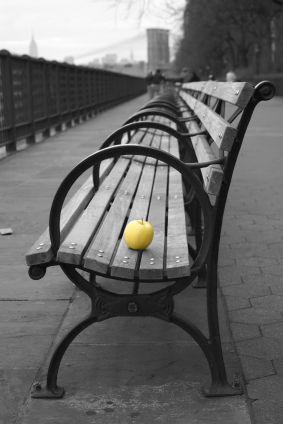 While this newest move toward Zero Waste by a big city is encouraging, we suspect that plenty of Zero Waste Outreach will be needed to make this new behavior palatable to blasé New Yorkers. The Big Apple will come up against many of the barriers to food scrap recycling that we struggle with on the West Coast, including countering perceptions of odor and vermin — aka the “yuck factor” — that make introducing food scrap recycling so challenging.
While this newest move toward Zero Waste by a big city is encouraging, we suspect that plenty of Zero Waste Outreach will be needed to make this new behavior palatable to blasé New Yorkers. The Big Apple will come up against many of the barriers to food scrap recycling that we struggle with on the West Coast, including countering perceptions of odor and vermin — aka the “yuck factor” — that make introducing food scrap recycling so challenging.
While several headlines focus on New York’s new “leadership” with this move, it should be noted that the City’s broad goal is to divert 30% of waste from landfills by 2017 (and 75% by 2030), as compared to San Francisco’s goal of zero waste by 2020 and the State of California’s goal of a 75% diversion rate by 2020, with an ultimate target of zero waste. New York’s current residential recycling rate is a startlingly low 15 percent.
The City conducted a pilot program in Staten Island, and officials were heartened after reaching a 43% participation rate in the targeted area. However, Staten Island is atypical of New York in that it comprises largely single-family homes. We know from our outreach work that multi-family dwellings (MFDs) are one of the most challenging segments when it comes to organics recycling … and there are a lot of apartment buildings in New York. MFDs lag single family dwellings in recycling rates by a huge margin. In Seattle, for example, single family homes achieved a 70.3% recycling rate in 2010, versus 29.6% for MFDs. Barriers to food scrap recycling in multi-unit buildings include space concerns, the perceived inconvenience, high turnover among residents and building managers, and lack of accountability, as the anonymity afforded by a large apartment building can let people assume that no one will know who’s not using the correct bin.
Believe it or not, curbside food scrap composting has been tried previously in New York, with a pilot program in Brooklyn in the early 1990s. But perhaps the effort was ahead of its time. The pilot wasn’t extended due to concerns that diversion would be low, while the expense and environmental impact of adding another truck route to the waste collection system was high.
In the interim, composting has been championed by a local agency, NYC Compost Project, which supports and promotes community-based composting sites throughout the City. The 20 years that have passed since the Brooklyn pilot likely means a better return on investment
We salute New Yorkers for taking steps toward reducing waste; each diverted pail-full will make a difference. If food scrap recycling can make it there, it can make it anywhere!
The 3 Cs of Plastic Bag Bans Around the World: Culture, Convenience & Cost
This month, Alameda County joins dozens of California cities and counties to ban plastic bags in most retail establishments. As part of outreach to prepare the public, events like reusable bag giveaways were conducted, right. Plastic bag bans have picked up steam around the world. Entire countries, from Rwanda to Ireland, have implemented bans to reduce the environmental scourge of those oh-so-convenient plastic bags.
Outreach (beyond enforcement of penalties) needs to play a key role in bag ban success. Is there an optimal scope for the ban, the best time frame for phasing in, the most effective messaging to gain acceptance? It looks as if bag bans, like so many other measures aimed at changing behavior, are affected by the 3 Cs: Culture, Convenience and Cost, as well as the big T: Time. As is so often the case, it takes way longer than might be expected for a simple behavior change to take root and become second nature … but it can be done.
Lessons from the Developing World?
Interestingly, the “developed world” was not a leader in banning plastic bags. The first country to ban plastic bags was Bangladesh, back in 2002. The impetus for the ban was the dangers of increased flooding and sewage problems as plastic bags clogged the sewer infrastructure. Outreach seems to have consisted of threats:
“After the ban, the government, environmental groups and NGOs carried out awareness programmes on TV and in mass information campaigns, warning offenders that they could be fined up to the equivalent of US$71 and six months of imprisonment for using polythene bags.”
The ban encountered problems due to lax enforcement and a lack of affordable alternatives to plastic for all uses, though jute bags were encouraged. Ten years later, plastic bags are still surreptitiously handed out by some vendors, but plastic is much less of a problem today for the country’s drainage system, a huge issue for the low-lying nation.
Culture’s Role
Enacting policy takes time: a nationwide ban on plastic bags in Rwanda was proposed in 2005, and passed in 2008 (some plastic bags have been made into soccer balls, right). The ban has been quite effective, as an accepted cultural event was incorporated from the beginning: gathering up plastic bags was incorporated into the nation’s monthly mandatory community clean-ups. Plastic-Free Times reports, “Once the ban passed, locals were encouraged to use the monthly obligatory communal work session, known locally as umuganda to collect all the plastic bags lying around or buried.”
The Burden of Cost
Haiti, the poorest nation in the Western Hemisphere and still recovering from the massive earthquake of three years ago this month, banned both plastic bags and foam containers last fall. As of October 1, the import, manufacture or marketing of the bags and containers is forbidden. Besides fighting the pollution issues, it is hoped that the ban will spur the local economy to create alternatives: “Importing, manufacturing bio-degradable items will benefit Haiti’s short, mid- and long-term environmental interest,” noted Prime Minister Laurent Lamothe. Just as here in California, the ban will disproportionately affect the poorest sectors the hardest, as affordable alternatives to the lightweight and ubiquitous plastic bags are not yet widely available. Regressive effects are a factor in the U.S. as well: in an attempt to correct for this, the Alameda County ordinance on plastic bags exempts those paying with WIC (food stamps) from the ten cent charge for reusable bags.
Making the New Behavior Convenient
Far from the streets of Oakland, the citizens of Delhi, India are struggling with massive environmental challenges, including plastic bag pollution. The city government banned bags in 2009, but the ban did not take, particularly at smaller retail stores, and manufacture and use continued. Last November, a new ban on the manufacture, import, sale, storage and use of all plastic bags, sheets, films or tubs (except for those for biomedical waste) went into effect, with enforcement and penalties to be doled out under the Environmental Protection Act. The New York Times reports that outreach efforts are being incorporated from the beginning: “Government officials are also planning to start an awareness campaign about the separation and recycling of waste, using social networking sites, and will hand out a limited number of jute and cloth shopping bags to select Resident Welfare Associations.”
Different cultures around the world have to approach the issue of pollution differently, taking into account local customs, government structure, and available alternatives. Some days it seems like achieving Zero Waste is a losing battle, but each step toward raising awareness of pollution and its consequences is an advance that will pay off in planetary spades.
For more on bag bans around the world, see Drop the Plastic Bag.
